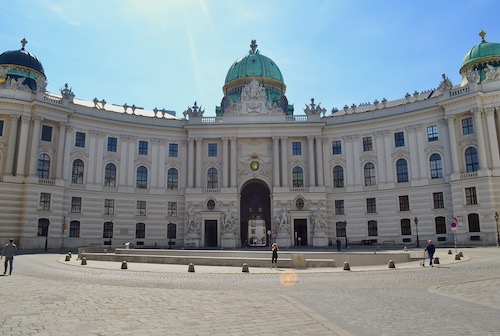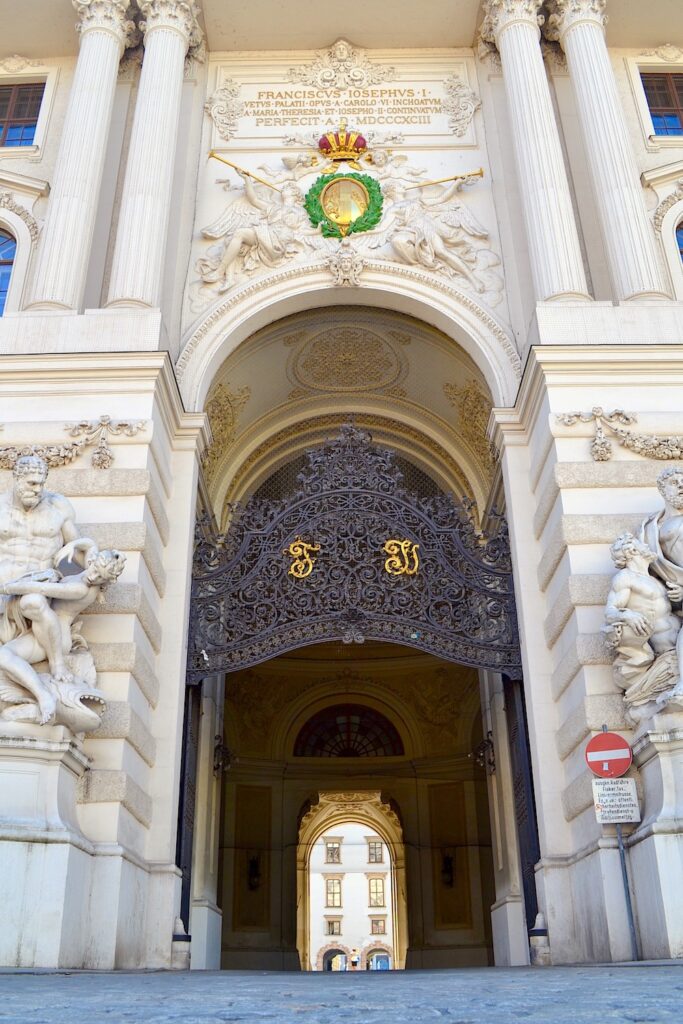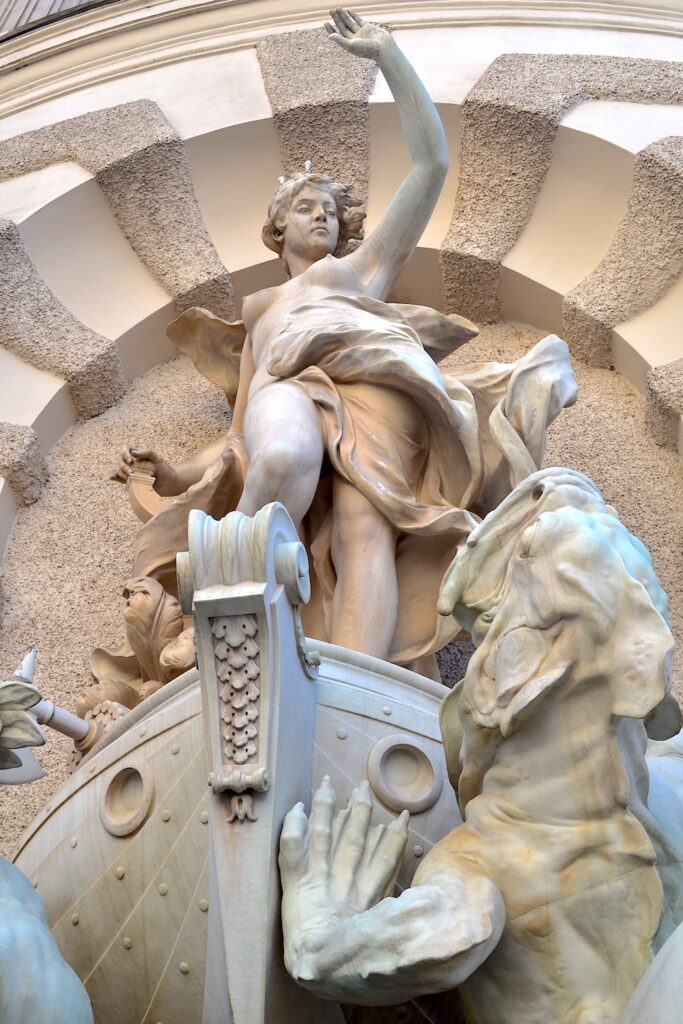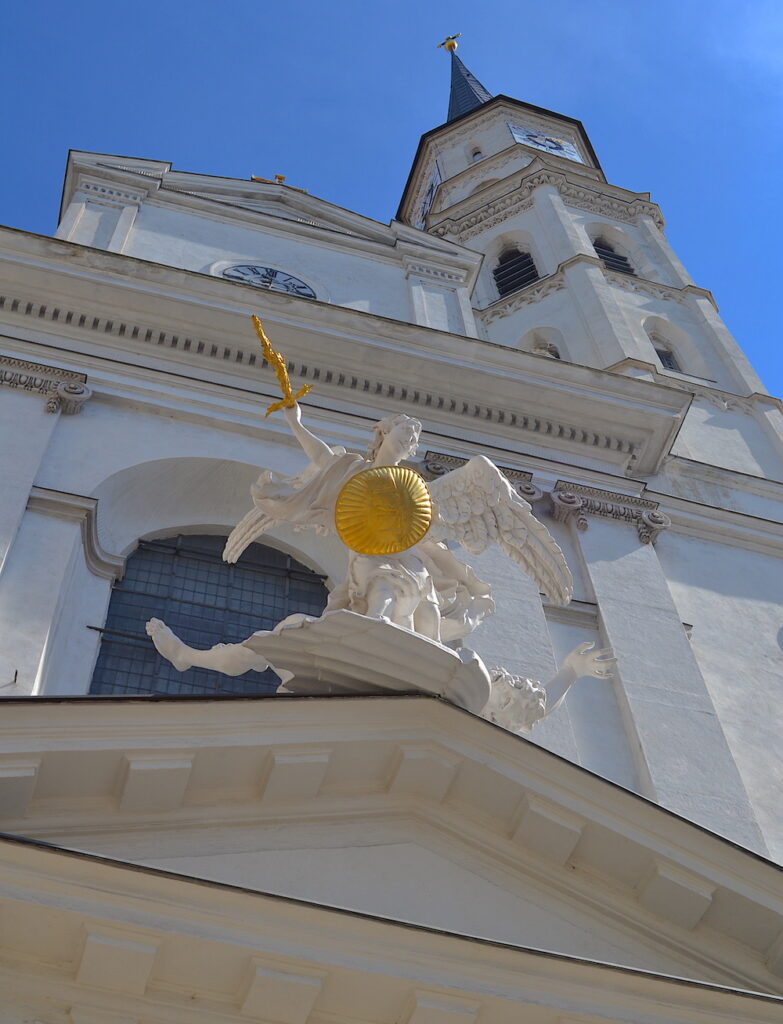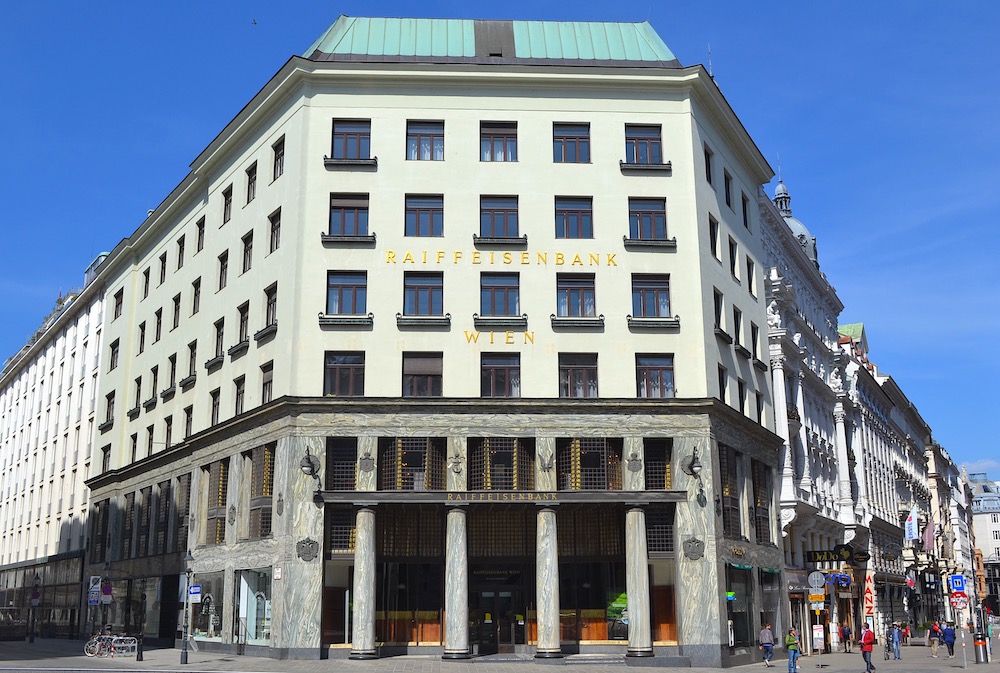Imperial Palace Hofburg has represented one of the most important buildings in the monarchy. For more than 600 years was the seat to the Habsburgs royal dynasty and center of the Holy Roman Empire. Therefore, it’s not surprising it has become one of the buildings that everyone comes to see.
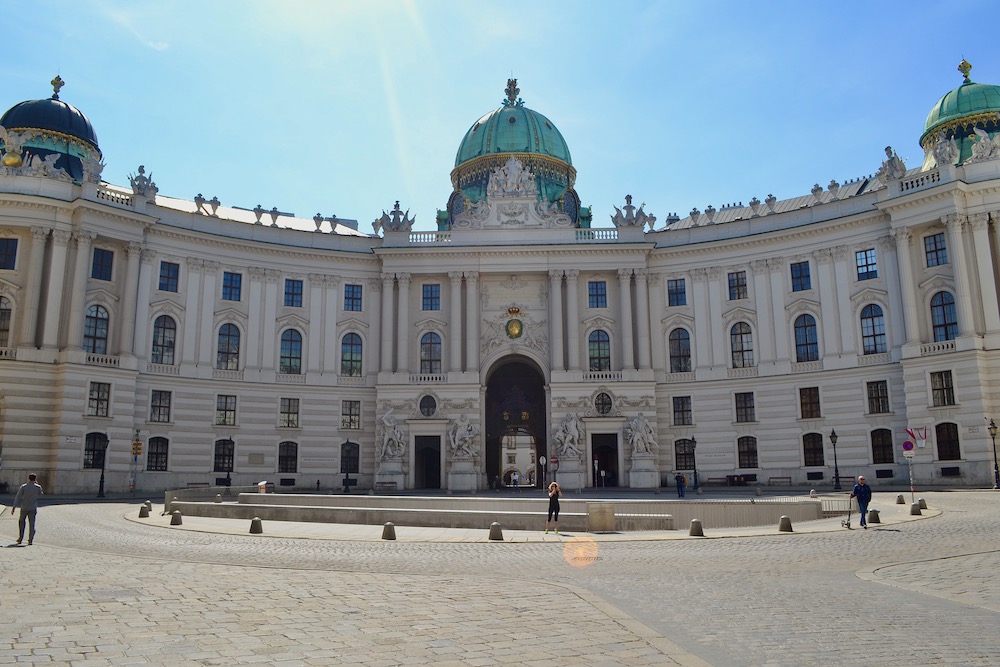
The entrance at the Imperial Palace Hofburg, the Michaelertrakt, as we knew it today, was built according to the plans from baroque architect Joseph Emanuel Fischer von Erlach.
The representative portal was built late in the 19th century during the regime of Emperor Francis Josef I. The Imperial Palace is crowned by a 54-meter high cupola and decorated with statues of Hercules.
Fountain “Austrian power to sea”
The main figure is an allegorical representation of Austria standing on the bow of a ship.
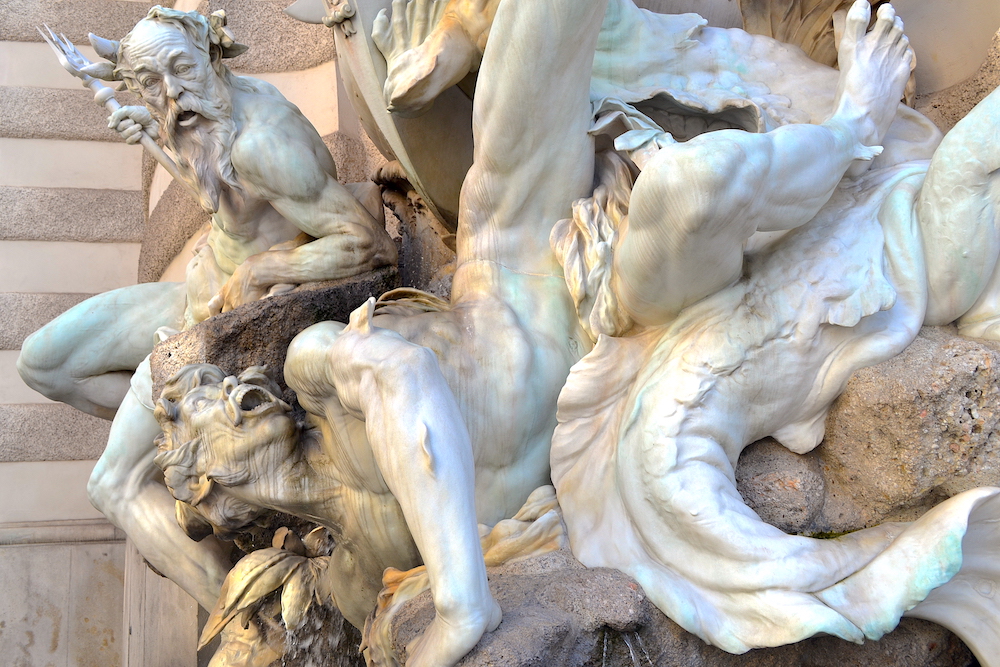
The St. Michael’s Church
The St. Michael’s Church at the Michaelerplatz is one of the oldest churches in Vienna. The church is dedicated to the archangel Michael.
It combines architectural styles from the 13th to the 18th century. For example, the portal porch of the “Angel’s Fall” group by Lorenzo Mattielli dates from the Baroque period.
During the exequial for Wolfgang Amadeus Mozart, parts of his Requiem were performed for the first time in the St. Michael Church.
The Losshaus
The Losshaus, built-in 1911 by Adolf Loss caused quite a controversy due to its modern façade void of decorations, something unusual in that time in Vienna.
The architect Adolf Loos was influenced by architecture that he had seen on a trip to the United States. Therefore, he employed a business-like style with straight lines and little or no decoration.
The modern design caused such a roar that construction was even temporarily halted. Loos was only allowed to continue after he promised to decorate the facade with balcony flower boxes.
After its completion, the house caused a shock in the town, which was still completely dominated by the historicist taste. The Viennese called it “the House without Eyebrows”.
Emperor Franz-Joseph I despised the modern façade opposite his palace. it’s said that the curtains in the wing opposite the Looshaus were always closed so he wouldn’t have to look at it.
Around the Imperial Palace, Burggarten.

